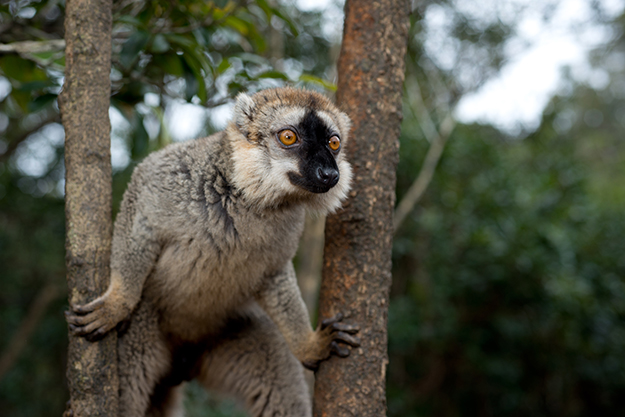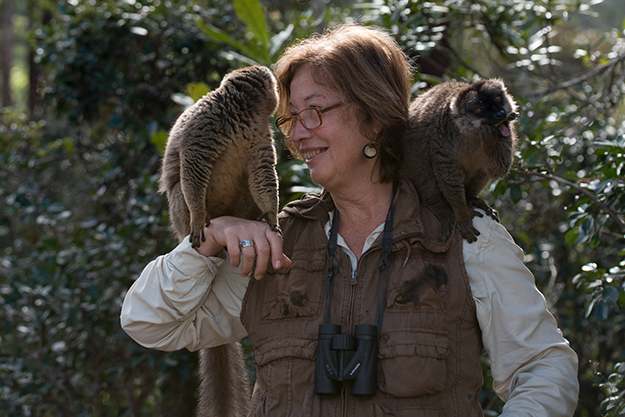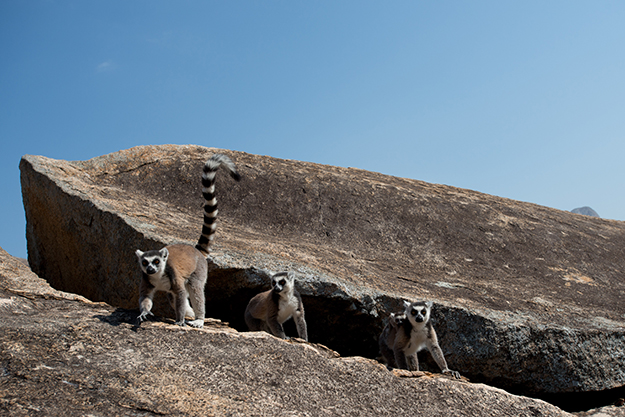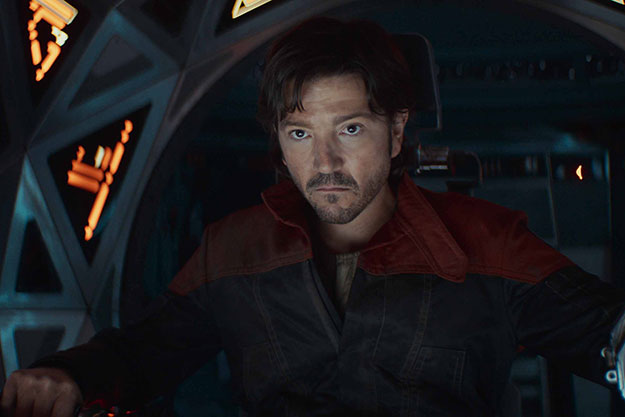Behind the Cameras of “Island of Lemurs: Madagascar”
Last Friday, March 28th we had the great opportunity to learn more about the IMAX “Island of Lemurs: Madagascar” during its press conference, with the director/cinematographer David Douglas, writer/producer Drew Fellman, the narrator Morgan Freeman, Dr. Patricia C. Wright and songwriter Hanitrarivo Rasoanaivo.
This film reunites Academy Winner Morgan Freeman with Drew Fellman, who also wrote and produced the 2011 IMAX 3D documentary “Born To Be Wild 3D” and director/cinematographer David Douglas, who was the director of photography on that film.
IMAX “Island of Lemurs: Madagascar” tells the incredible true story of nature’s greatest explorers, the lemurs. Captured with IMAX 3D cameras, the film takes audiences on a spectacular journey to the remote and wondrous world of Madagascar, where lemurs arrived millions of years ago as castaways. They have since evolved into hundreds of diverse species, but are now highly endangered. The film, also highlights the tireless efforts of trailblazing scientist Dr. Patricia C. Wright and her lifelong mission to help these strange and adorable creatures survive in the modern world. According to Dr. Wright, there are 103 different species of lemurs and 91% of them are threatened or endangered, becoming the reason she had stayed as long as she had on Madagascar. “The lemurs are mostly endangered, because of the deforestation and also by being hunt. Before, the villagers out there who had all the wisdom, would say “do not eat them, because they are so much like gods and they are sacred”, but recently the hunting has become more popular,” she explained.
An interesting fact, that was collaborated by songwriter Hanitrarivo Rasoanaivo (who is from Madagascar) to the press, telling us that yes the population of Madagascar is eating them, because of hunger. “For us it's just a normal thing, to see these animals doing all different things. But yes, we do eat them now, because people are poor and hungry and I’m so thankful that these people, have come all the way from Hollywood, because hopefully it will help to keep them alive,” said Rasoanaivo.
Also, Morgan Freeman who was again invited by Warner Brothers to narrate this wonderful adventure documentary IMAX “Island of Lemurs: Madagascar”, said he had to do it, especially if it’s to help. “Warner Brothers reached out to me and told me about this documentary, Lemurs in Madagascar and that they would like me back to narrate it and that it's a project that might give some SUCCOR (help, relief, aid, assistance). So, when it’s something that gives attention and consideration to the other life forms on our planet, I’m happy to do that, it’s an obligation, I had to do it,” said Freeman.
The habitat of the lemurs in Madagascar, was beautifully shot, with an IMAX D3D camera and it showcases the first ever aerials shot in IMAX 3D. The director David Douglas used a balloon called the cinebull, which came from France and that he describes as “a strange flying lawn chair” with a three foot propeller on the back allowing it to move in any direction. And it came in quite handy, especially when he needed to be around the lemurs. “One of the things that we noticed while scouting, is that we needed to follow the lemurs on the trees, for us to tell their story and that meant, we needed to get off the ground somehow and would resist to have on it a 3D camera, which weighs about 60 pounds,” explained Douglas. “I’ve never tried the cineball before, it can only carry two people, including the camera, which is in the middle between the pilot and me. But the good thing about the cineball, is that it's quiet, being great around lemurs, because they would ignore your presence, because they have little reference about balloons coming by,” he continued.
For the film crew to get close to the lemurs in their habitat with the equipment, was very challenging, especially the terrain of the Ring-tailed lemurs according to Drew Fellman. “Getting to the locations, was very hard, but I probably have to say that working with the ring-tailed lemurs was perhaps the hardest, because that terrain was so difficult and it’s sort of a place that you get lost in a second without all the guides we had with us. It's this huge boulder field, jumping through and around, living in all the cracks of that, it was very hard just to get around,” explained Fellman.
David Douglas chimed in by saying something interesting about the ring-tailed lemurs terrain, and it's that their equipment would get lost everyday on this location. “This place is called Anja, and our things would get lost there everyday, when we left the equipment there, because it was hard trying to get it all the way down and then try to get it up again. But then the next day we couldn’t find some of the equipment,” said Douglas making the press laugh.
To finalize, Dr. Patricia C. Wright, who was a social worker before she became a scientist, said that when she got approached by the production to be the scientific adviser for this documentary she was a little skeptical about it. “I was a little skeptical, because I didn’t want lemurs to be made fun of. I want people to really understand, how beautiful they are and how their lifestyle is. And these two guys (referring to David Douglas and Drew Fellman) are scientists… asking the right questions, thinking about how the animals would actually be doing things and they are really good. It didn’t take me long to figure that out, so I was very proud to be part of this and I feel that maybe I can do something, maybe through this film, so the lemurs could survive in the future,” said Wright.
IMAX Island of Lemurs: Madagascar in theatres April 4th!















